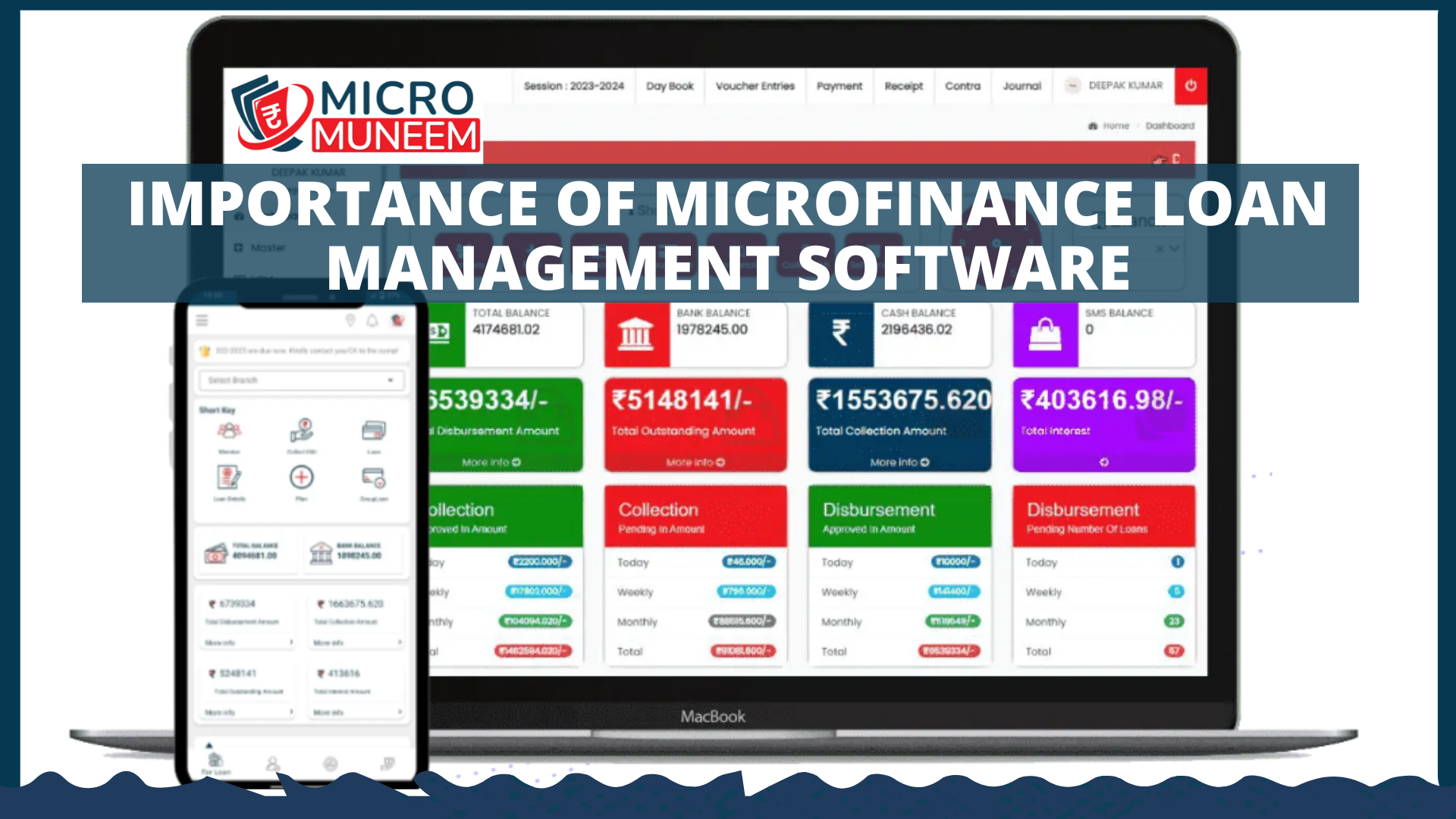Having trouble managing loans and records for your microfinance business? We can help! Here's why you need microfinance software and what microfinance loan features to look for.
IMPORTANCE OF MICROFINANCE LOAN MANAGEMENT SOFTWARE
Microfinance institutions (MFIs) play a crucial role in providing financial services to underserved populations, especially in developing countries. These institutions offer microloans and other financial products to entrepreneurs and individuals who lack access to traditional banking services. To effectively manage their loan portfolios and streamline their operations, MFIs often rely on microfinance loan management software. Microfinance software provides a comprehensive set of tools and features specifically designed to meet the unique needs of microfinance institutions.
Microfinance loan management software serves as a centralized platform for managing the entire loan lifecycle, from application and approval to disbursement, repayment, and reporting. It automates and streamlines various processes, allowing MFIs to increase operational efficiency, reduce costs, and improve customer service. Here are some key features and functionalities typically found in loan management software for microfinance:
MICROFINANCE SOFTWARE FEATURES
- Loan Application and Approval: The microfinance software enables MFIs to digitize and automate the loan application process. It includes features such as online application forms, document management, credit scoring, and loan approval workflows. These features help speed up the application review process, reduce paperwork, and ensure consistent and fair lending decisions.
- Client Management: Microfinance loan management software includes robust client management capabilities. It allows MFIs to maintain detailed client profiles, track client interactions, and store relevant documents. This information helps MFIs understand their clients' needs, track their loan history, and offer personalized financial products and services.
- Loan Portfolio Management: The Microfinance loan software provides tools for managing the MFI's loan portfolio efficiently. It allows MFIs to set up various loan products with different interest rates, repayment terms, and collateral requirements. It also facilitates loan disbursement and repayment scheduling, calculates interest, and tracks loan delinquencies. Microfinance Software features enable MFIs to monitor and manage their loan portfolio effectively.
- Savings and Deposits Management: Many loan management software for microfinance also include features for managing savings and deposit accounts. MFIs can offer their clients the ability to save money, earn interest, and make deposits and withdrawals. The Microfinance software tracks savings transactions, generates statements, and calculates interest accruals.
- Collection and Repayment: Microfinance loan management software streamlines the loan collection and repayment process. It offers features such as automated payment reminders, repayment scheduling, and collection tracking. The Microfinance Loan software can integrate with different payment channels, including mobile money and online payment gateways, making it easier for clients to make loan repayments.
- Accounting and Financial Reporting: The Microfinance software provides comprehensive accounting functionalities tailored to microfinance institutions. It automates financial transactions, generates balance sheets, income statements, and cash flow reports, and ensures compliance with accounting standards. This streamlines financial reporting and simplifies auditing processes.
- Reporting and Analytics: Microfinance loan management software includes reporting and analytics tools that provide insights into the MFI's operations and performance. It offers customizable dashboards, key performance indicators (KPIs), and visualizations, enabling MFIs to track loan disbursements, portfolio quality, repayment rates, and profitability. These insights help management make informed decisions and identify areas for improvement.
- Security and Data Management: Given the sensitive nature of financial data, microfinance loan management software prioritizes data security. It includes robust security features such as user access controls, data encryption, and regular data backups. These measures protect client information and ensure compliance with data privacy regulations.
- Integration and Scalability: Microfinance loan software can integrate with other systems and platforms, such as core banking systems, mobile banking apps, and credit bureaus. This allows MFIs to leverage existing infrastructure and expand their service offerings. The Microfinance software should also be scalable to accommodate the growing needs of the MFI as its operations expand.
In conclusion, microfinance loan management software plays a crucial role in the efficient operation of microfinance institutions. It automates and streamlines loan processes, client management, accounting, reporting, and analytics. By leveraging these microfinance software features, MFIs can enhance their operational efficiency, improve client service, and make better-informed business decisions. Ultimately, microfinance loan management software empowers MFIs to fulfill their mission of providing inclusive financial services to underserved communities.
If you are looking for one of the Best Microfinance Software in India, check out the MicroMuneem Microfinance Software. Call at 9911551344 or 7017109788 for quick demo.
Check out demo training videos of MicroMuneem Microfinance Software


